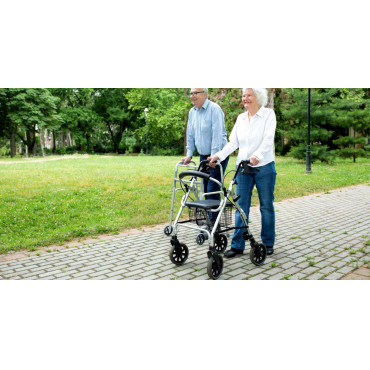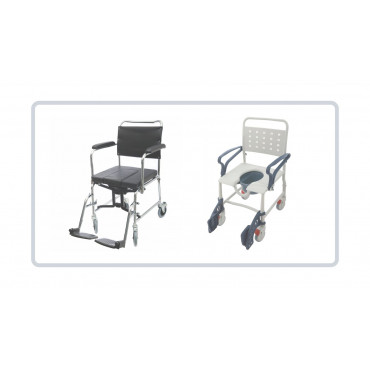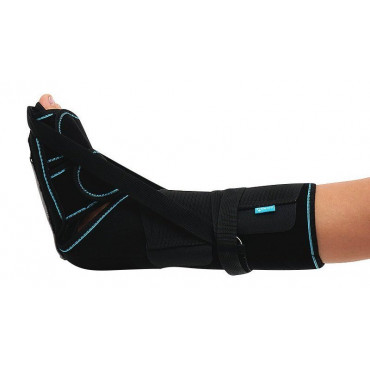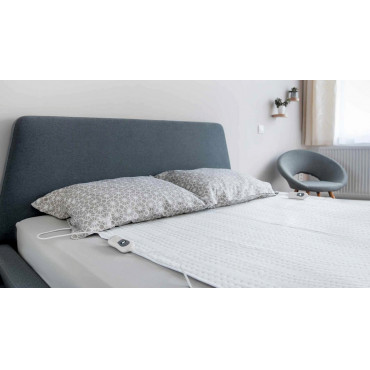How to choose a walking stick
There are often moments when walking requires support, whether it be an injury, rehabilitation or old age, in all cases a cane will come to the rescue.
A cane is a supporting device in the form of a thin long stick, at one end of which there is a handle-knob for which a person holds a cane, and at the other end there is a supporting part with which it rests on the surface, it can be a single support or multiple for greater stability .
Let's take a closer look at what those same canes are.
Cane types
- A standard cane is the simplest option, it is usually made of cheap materials, it does not have the ability to adjust the height, which significantly reduces its cost and makes it as affordable as possible.
- Folding or telescopic cane - this cane can be adjusted in height, which greatly simplifies the adjustment to the height of the user. Sometimes not just adjustable, but also can be folded, making it compact to carry and store when you need to save space.
- Multi-support cane - characterized by increased stability due to not one support, but several, three or four. The most popular model is a cane on four legs, a quadropod. These canes can withstand increased stress and are more stable, which will help a person feel more confident when walking.
- A cane for the blind or sonar is a device rather than for support, but for familiarization with the environment. Such canes are thin and light, and at the end they do not have a support, but a special device that, when tapped on certain surfaces, makes a characteristic sound. This system allows people who have poor or no vision to move around.
Cane material
A variety of materials are used for the manufacture of canes, all of which are used depending on the purpose and estimated cost.
A popular material for making standard canes is wood. A wooden cane can be found both in the cheap segment and in the expensive one, since the tree can be used in different ways. Cheaper options are made from available species, such as oak or beech. Such canes are not adjustable in height, but they are quite strong and durable. Variants of status canes are made from valuable trees, mahogany, or you can even find a cane made of bamboo. Most often, such canes are more of a decorative element of style than an aid for support.
The telescoping and folding cane is made of light metals, this allows lightening the weight and producing a folding mechanism. Aluminum or duralumin, various alloys, the variety is great and there will always be plenty to choose from. These canes are comfortable and easy to care for. They are strong and durable, with a light weight canes can withstand a fairly high load.
A cane for the blind is usually made of lightweight materials, as it does not provide for a load on it. Rubber or plastic, composite or fiberglass cane usually ends with a tip, which plays a major role. Depending on the material of the tip, plastic, ceramic, the reed will make a sound when it hits objects around, letting the user know what is around him.
Characteristics and parameters of the cane
How to choose and buy a cane that is suitable for each situation?
Parameter options:
- Purpose;
- Production material;
- Weight;
- Height.
The purpose of the cane is a significant selection parameter. Depending on the situation in which the cane will be used, the material of manufacture and appearance may also depend.
In cases of rehabilitation and old age, a multi-support cane will be the most convenient, it will provide stability and reliability.
Canes for people with visual impairments, respectively, will differ from the support one, since here is a completely different task.
What the cane is made of also affects the choice, for example, a status cane does not have to be stable and strong. These reeds are designed to emphasize style and should look expensive, be made of expensive materials, possibly with inlaid handles or exclusive decorative elements.
Regarding the weight of the cane, at the moment, there is only one requirement - lightness. Regardless of the field of application, manufacturers try to make a cane with a minimum weight. This makes it easier for the user to move around. Innovative materials such as aluminum alloys, fiberglass, composite materials are increasingly included in the production of reeds.
The ability to adjust the height of the cane, a significant advantage in the choice. This makes it possible to adjust the cane to any person without limiting the user's choice.
An exception in this case are standard wooden canes, they cannot be adjusted in height and this is their minus, but due to the ease of production, their cost also decreases, and this is a plus.
As you can see, the market is filled with all sorts of options for every taste, pocket and occasion. Of course, appearance and materials are secondary options of choice. When choosing means of rehabilitation, the first consultant in choosing is always a doctor. It is he who will direct and tell you what kind of cane is needed, and then it’s a matter of taste and material possibilities for everyone.










-370x370.jpg)